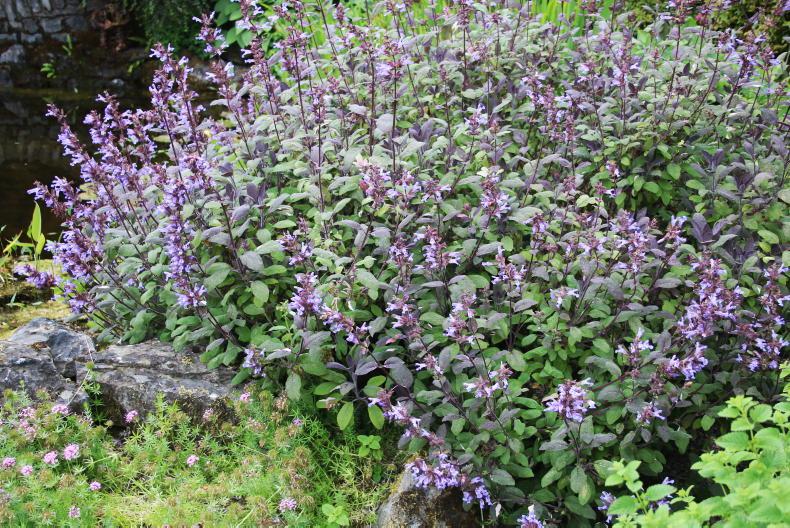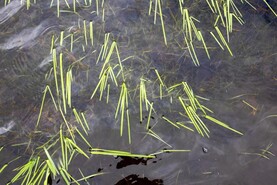If the pandemic has left us with any positive side-effects, an increased interest in gardening, and especially growing your own food, is surely one of them.
It is so satisfying growing something you can eat but it does involve considerable time commitment and space.
Being fortunate enough to have plenty of space allows me to dream often of having the perfect kitchen garden, with neat rows of tasty, home-grown produce waiting for me to turn it into all sorts of culinary delights.
Unfortunately, like so many people, the reality for me is that I don’t have the time to pursue the dream.
On a recent visit to the UK to catch up with some friends and family, I took the opportunity to revisit the Royal Horticultural Society’s garden at Wisley where I spent some time in my student days.
Since my last visit, several years ago, there have been large changes, notably the development of the World Food Garden which demonstrates ways to grow herbs, edible flowers, fruit and vegetables, including many exotic and lesser-known foods from around the globe.
Rather than growing vegetables and other food plants in traditional strips, here they are grown in all manner of creative ways to inspire the visitor and show what can be achieved in home gardens of all sizes.
It got me thinking more about the concept of edimental gardening. This involves growing plants with both edible and ornamental qualities and informally integrating them with other forms of planting.
Chives & edible flowers
Examples include planting chives and lemon balm as border edgings.
Chives are alliums, relatives of their grander garden cousins but cheaper to buy and just as pretty with small, pink flower heads and elegant, linear leaves that are delicious in salads and soups.
Lemon balm is a delightful herb known for its calming effects. Its lemon-scented leaves are used in teas that can be a great addition to your relaxation routine.
Common sage, Salvia officinalis, with its soft, grey leaves, makes an attractive, usually evergreen addition to some of our sunnier borders and the purple flowers are a magnet for bees and other beneficial insects.

Common sage, Salvia officinalis, is a popular herb that blends easily into the ornamental garden.
For bold, dramatic effect, we grow the globe artichoke, Cynara scolymus, as a stately centrepiece or backdrop in mixed plantings. As autumn approaches, beautifully-shaped, edible flower buds form on the tips of thick stems over the grey-blue leaves.
Other edible plants that we incorporate for their decorative merits into our borders include thyme, rosemary, lovage, angelica and the shrubby lemon verbena, Aloysia citrodora.
However, my visit to the World Food Garden at RHS Wisley has made me realise the potential to grow so many other food plants or edimentals in our garden alongside our ornamental plants.
Carlow Garden Festival
To learn more about this idea, I took myself to a talk at the recent Carlow Garden Festival given by two of our renowned Irish horticulturists, Kitty Scully and Colm O’Driscoll.
The title of the talk was ‘The art of harmony – blending edibles with ornamentals’ and it provided an excellent insight into fusing aesthetic characteristics of the garden with the practicality of growing plants to provide tasty and nutrient-rich foods.
Colm O'Driscoll commented that interplanting edibles with ornamentals creates diversity which brings many beneficial associations that can build resilience into the planting, whereas the monocultures of traditional kitchen gardens or allotments can lead to greater susceptibility to pest and disease problems.
For anyone interested in edimental gardening, horticulturalist Kitty Scully recommended the book Creative Vegetable Gardening by Joy Larkcom, a widely respected garden writer and vegetable garden maker based in Co Cork.
Mary Keenan and Ross Doyle run Gash Gardens, Co Laois, which is open to the public. gashgardens.ie
Plant autumn crocus
Autumn crocuses (Colchicum) look like spring crocuses but are actually members of the lily family. They generally bloom in October, with flowers ranging in colour from purple to palest pink and pure white.
The flowers come up without any leaves, which gives them their other common name of ‘naked ladies’.
Colchicum bulbs (or strictly speaking, corms) planted now will produce flowers in about six week’s time. Plant 5-10cm deep and around 15cm apart in a free-draining, fertile soil, preferably in sun but dappled shade is tolerated.
Collect seeds of hardy annuals and perennials. Label and store in a cool, dry place for sowing later in autumn or next spring, as appropriate for the plant. Good plants to try from seed include Calendula, Aquilegia, Papaver, Cerinthe and Nigella. Buy or order spring-flowering bulbs to avail of the best selection but delay planting until conditions are consistently cooler.Cut summer-flowering meadows if the plants have shed their seeds. Sunday, 8 September: Autumn Plant Fair at Fota House, Cobh, Co Cork in association with Irish Specialist Nursery Association (ISNA). Time: 11am to 4pm. Specialist plant nurseries and other stalls.Saturday, 17 August 17 to Sunday, 25 August: National Heritage Week. Check out heritageweek.ie for details of special garden openings and events.
If the pandemic has left us with any positive side-effects, an increased interest in gardening, and especially growing your own food, is surely one of them.
It is so satisfying growing something you can eat but it does involve considerable time commitment and space.
Being fortunate enough to have plenty of space allows me to dream often of having the perfect kitchen garden, with neat rows of tasty, home-grown produce waiting for me to turn it into all sorts of culinary delights.
Unfortunately, like so many people, the reality for me is that I don’t have the time to pursue the dream.
On a recent visit to the UK to catch up with some friends and family, I took the opportunity to revisit the Royal Horticultural Society’s garden at Wisley where I spent some time in my student days.
Since my last visit, several years ago, there have been large changes, notably the development of the World Food Garden which demonstrates ways to grow herbs, edible flowers, fruit and vegetables, including many exotic and lesser-known foods from around the globe.
Rather than growing vegetables and other food plants in traditional strips, here they are grown in all manner of creative ways to inspire the visitor and show what can be achieved in home gardens of all sizes.
It got me thinking more about the concept of edimental gardening. This involves growing plants with both edible and ornamental qualities and informally integrating them with other forms of planting.
Chives & edible flowers
Examples include planting chives and lemon balm as border edgings.
Chives are alliums, relatives of their grander garden cousins but cheaper to buy and just as pretty with small, pink flower heads and elegant, linear leaves that are delicious in salads and soups.
Lemon balm is a delightful herb known for its calming effects. Its lemon-scented leaves are used in teas that can be a great addition to your relaxation routine.
Common sage, Salvia officinalis, with its soft, grey leaves, makes an attractive, usually evergreen addition to some of our sunnier borders and the purple flowers are a magnet for bees and other beneficial insects.

Common sage, Salvia officinalis, is a popular herb that blends easily into the ornamental garden.
For bold, dramatic effect, we grow the globe artichoke, Cynara scolymus, as a stately centrepiece or backdrop in mixed plantings. As autumn approaches, beautifully-shaped, edible flower buds form on the tips of thick stems over the grey-blue leaves.
Other edible plants that we incorporate for their decorative merits into our borders include thyme, rosemary, lovage, angelica and the shrubby lemon verbena, Aloysia citrodora.
However, my visit to the World Food Garden at RHS Wisley has made me realise the potential to grow so many other food plants or edimentals in our garden alongside our ornamental plants.
Carlow Garden Festival
To learn more about this idea, I took myself to a talk at the recent Carlow Garden Festival given by two of our renowned Irish horticulturists, Kitty Scully and Colm O’Driscoll.
The title of the talk was ‘The art of harmony – blending edibles with ornamentals’ and it provided an excellent insight into fusing aesthetic characteristics of the garden with the practicality of growing plants to provide tasty and nutrient-rich foods.
Colm O'Driscoll commented that interplanting edibles with ornamentals creates diversity which brings many beneficial associations that can build resilience into the planting, whereas the monocultures of traditional kitchen gardens or allotments can lead to greater susceptibility to pest and disease problems.
For anyone interested in edimental gardening, horticulturalist Kitty Scully recommended the book Creative Vegetable Gardening by Joy Larkcom, a widely respected garden writer and vegetable garden maker based in Co Cork.
Mary Keenan and Ross Doyle run Gash Gardens, Co Laois, which is open to the public. gashgardens.ie
Plant autumn crocus
Autumn crocuses (Colchicum) look like spring crocuses but are actually members of the lily family. They generally bloom in October, with flowers ranging in colour from purple to palest pink and pure white.
The flowers come up without any leaves, which gives them their other common name of ‘naked ladies’.
Colchicum bulbs (or strictly speaking, corms) planted now will produce flowers in about six week’s time. Plant 5-10cm deep and around 15cm apart in a free-draining, fertile soil, preferably in sun but dappled shade is tolerated.
Collect seeds of hardy annuals and perennials. Label and store in a cool, dry place for sowing later in autumn or next spring, as appropriate for the plant. Good plants to try from seed include Calendula, Aquilegia, Papaver, Cerinthe and Nigella. Buy or order spring-flowering bulbs to avail of the best selection but delay planting until conditions are consistently cooler.Cut summer-flowering meadows if the plants have shed their seeds. Sunday, 8 September: Autumn Plant Fair at Fota House, Cobh, Co Cork in association with Irish Specialist Nursery Association (ISNA). Time: 11am to 4pm. Specialist plant nurseries and other stalls.Saturday, 17 August 17 to Sunday, 25 August: National Heritage Week. Check out heritageweek.ie for details of special garden openings and events.







 This is a subscriber-only article
This is a subscriber-only article










SHARING OPTIONS: